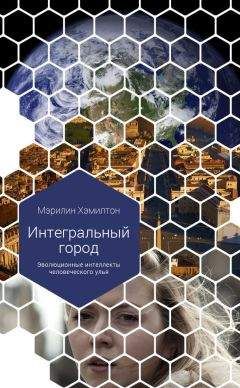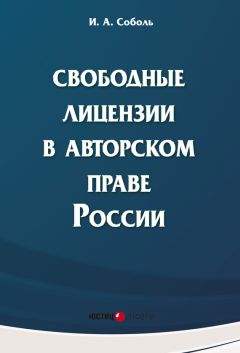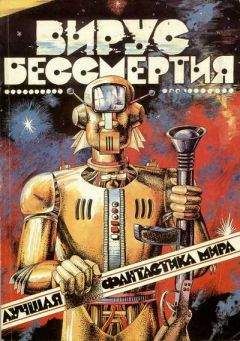Мэрилин Хэмилтон - Интегральный город. Эволюционные интеллекты человеческого улья

Помощь проекту
Интегральный город. Эволюционные интеллекты человеческого улья читать книгу онлайн
Hawken, P. (May 7, 2007). «To Remake the World Something Earth-Changing Is Afoot Among Civil Society.» Orion Magazine.
Hertzman, C., S. A. McLean, D. E. Kohen, J. Dunn & T. Evans (2002). Early Development in Vancouver: Report of the Community Asset Mapping Project (CAMP). Vancouver, BC: Community Asset Mapping Project UBC.
Hochachka, G. (2005). Developing Sustainability, Developing the Self: An Integral Approach to International and Community Development. University of Victoria, BC: Polis Project on Ecological Governance.
Holling, C. S. (2001). «Understanding the Complexity of Economic, Ecological and Social Systems.» Ecosystems, 4, 390–405.
Holling, C S. (2003). From Complex Regions to Complex Worlds. University of Florida.
Homer-Dixon, T. (2006). The Upside of Down: Catastrophe, Creativity, and the Renewal of Civilization. Toronto: Alfred A. Knopf.
Howard, P. J. (1994). The Owner’s Manual for the Brain: Everyday Applications from Mind-brain Research. Austin, TX: Leornian Press.
Isaacs, W. (1999). Dialogue and the Art of Thinking Together. New York: Currency Doubleday.
Jacobs, J. (1970). Economy of Cities. New York: Vintage.
Jacobs, J. (1992). The Death and Life of Great American Cities. New York: Vintage.
Jacobs, J. (1994). Systems of Survival. New York: First Vintage.
Jacobs, J. (2001). The Nature of Economies. New York: First Vintage.
Jacobs, J. (2004). Dark Age Ahead. New York: Random House.
Jaworski, J. (1996). Synchronicity: The Inner Path of Leadership. San Francisco: Berrett-Koehler.
Johnson, S. (2004). Emergence: The Connected Lives of Ants, Brains, Cities, and Software. New York: Scribener.
Kauffman, S. A. (1993). The Origins of Order: Self-organization and Selection in Evolution. New York: Oxford Press.
Laszlo, E. (2004). Science and the Akashic Field: An Integral Theory of Everything. (2007 ed.). Rochester, Vermont: Inner Traditions.
Laszlo, E. (2006a). The Chaos Point: The World at the Crossroads. Charlottesville, VA: Hampton Roads Publishing.
Laszlo, E. (2006b). Science and the Reenchantment of the Cosmos: The Rise of the Integral Vision of Reality. Rochester, VT: Inner Traditions, Bear & Co.
Leonard, G. & M. Murphy (1995). The Life We Are Given. New York: Jeremy P. Tarcher/Putnam.
Lipton, B. (2005). The Biology of Belief: Unleashing the Power of Consciousness, Matter and Miracles. Santa Rosa, CA: Mountain of Love/Elite Books.
Loop Initiatives. (2007). LOOP Integrated Rating Indicator for Sustainability. www.loopinitiatives.com/iris.html
Lopez, B. & T. C. Pearson (1990). Crow and Weasel. Berkeley, CA: North Point Press.
Lorenz, E. (1995). The Essence of Chaos. Seattle: University of Washington Press.
Margulis, L. & D. Sagan (1997). Microcosmos: Four Billion Years of Microbial Evolution. Los Angeles: University of California Press.
Maturana, H., & Varela, F. (1987, 1992). The Tree of Knowledge. Boston: Shambhala.
Mau, B. & J. Leonard (Eds.). (2004). Massive Change. New York: Phaidon Press.
McGregor, R. (2007). «750,000 a Year Killed by Chinese Pollution.» Retrieved July 4, 2007, from Financial Times Online: www.ft.com/cms/so/8f40e248-28c7-11dc-af78-000b5df10621.html
McIntosh, S. (2007). Integral Consciousness and the Future of Evolution: How the Integral Worldview Is Transforming Politics, Culture and Spirituality. St. Paul, MN: Paragon House.
McKibben, B. (2007). Deep Economy: The Wealth of Communities and the Durable Future. New York: Time Books, Henry Holt and Co.
McQuade, A. (2005). «Reviving our Interiors: Serving the Mentally Ill Living on Our Streets.» AQAL, 14..
Meller, H. (1990). Patrick Geddes: Social Evolutionist and City Planner. London: Routledge.
Miller, J. G. (1978). Living Systems. New York: McGraw-Hill.
Mittelstadt, M. (September 7, 2007). «Mysterious Die-off of Honeybees Explained.» The Globe and Mail.
Moir, A. & D. Jessel (1991). Brain Sex. New York: Dell.
Monbiot, G. & M. Prescott (2007). Heat: How to Stop the Planet from Burning. Toronto: Anchor Canada.
Morelli, M., A. Leonard, T. Patten, J. Salzman & K. Wilber (2006). Welcome to Integral Life Practice: Your Guide to the ILP Starter Kit (1 ed.). Denver, CO: Integral Institute.
Morgan, G. (1998). Images of Organization. Thousand Oaks, CA: Sage Publications.
Mumford, L. (1946). Values for Survival: Essays, Addresses, and Letters on Politics and Education. New York: Harcourt, Brace and Co.
Mumford, L. (1970). «Closing Statement.» In The Ecological Conscience: Values for Survival». R. Disch (Ed.), (pp. 91-102). Englewood Cliffs, NJ: Prentice Hall.
Murphy, M. (1992). The Future of the Body: Explorations into the Further Evolution of Human Nature. Los Angeles: Jeremy P. Tarcher.
Naess, A. & D. Rothenberg (trans. and rev. 1989). Ecology, Community and Lifestyle: Outline of an Ecosophy. Cambridge: Cambridge University Press.
Nichol, L. (2006). Supporting Rural and Remote Employment Counsellors. Unpublished thesis, Royal Roads University, Victoria, BC.
Owen, C. (2005). «Integral Planning Toward Sustainable Consumption and Waste Reduction in Calgary OR ’INFLUENCING THE EFFLUENCE OF AFFLUENCE’.» Paper presented at the Canadian Institute of Planners Conference, July 2005, Calgary, AB.
Palmer, P. (n. d.). Thirteen Ways of Looking at Community (With a Fourteenth Thrown in for Free). Unpublished.
Peck, M. S. (1987). The Different Drum: Community-Making and Peace. New York: Touchstone, Simon & Schuster.
Peck, M. S. (1993). A World Waiting to Be Born. New York: Bantam.
Pinker, S. (2003). The Blank Slate: The Modern Denial of Human Nature. New York: Penguin.
Pointe, S. B., Lieutenant Governor. (2008). Speech from the Throne, Opening of the Fourth Session, 38th Parliament, Victoria, BC. Retrieved from www.leg.bc.ca/38th4th/4-8-38-4.htm.
Porkert, M. & D. C. Ullmann (1988). Chinese Medicine (M. Howson, Trans.). New York: William Morrow and Co.
Prigogine, I. (1967). «Dissipative Structures in Chemical Systems,» in Fast Reactions and Primary Processes in Chemical Kinetics, Stig Claesson (Ed.), Interscience.
Prigogine, I. (1989). The Philosophy of Instability, Futures, 21, 4, 396–400.
Prigogine, I. (1997). The End of Certainty. New York: The Free Press, Simon & Schuster.
Prigogine, I. & I. Stengers (1984). Order out of Chaos. New York: Bantam.
Reams, J. (2002). The Consciousness of Transpersonal Leadership. Unpublished doctoral dissertation, Gonzaga University, Spokane, WA.
Rees, W. E. P. D. & M. Wackernagel (1994). Ecological Footprints and Appropriated Carrying Capacity: Measuring the Natural Capital Requirements of the Human Economy. Washington, DC: Island Press.
Reynolds, B. (2003). Optimizing the Alternative Dispute Resolution Process at Fisheries and Oceans. Unpublished thesis, Royal Roads University, Victoria, BC.
Ridley, M. (2003). The Agile Gene: How Nature Turns on Nurture. Toronto: HarperPerennial.
Robertson, R. (October – December, 2007). «A Brighter Shade of Green: Rebooting Environmentalism for the 21st Century.» What Is Enlightenment? 42–62.
Rosas, D. & C. Rosas (2005). NA. New York: Broadway.
Ruder, K. & D. Sando (2002). Spiral Flower System Map of Community. Seattle: Center for Ethical Leadership, www. ethicalleadership. org
Runnalls, C. (2007). Architecting Community Sustainability: Cultural Planning and Community Development. Unpublished thesis, Royal Roads University, Victoria, BC.
Sahtouris, E. (1999). Earthdance: Living Systems in Evolution. Retrieved from ratical.org/LifeWeb/
Sandercock, L. (2000). «When Strangers Become Neighbours: Managing Cities of Difference.» Planning Theory and Practice, 1(1).
Sandercock, L. & P. Lyssiotis (2004). Cosmopolis II: Mongrel Cities of the 21st Century. London: Continuum International Publishing Group.
Satin, M. (2005). «The Katrina Dialogues» [electronic version]. Retrieved October 4, 2007, from radicalmiddle.com/x_katrina_dialogues.htm.
Senge, P. M. (1995). «Creating Quality Communities.» In Community Building: Renewing Spirit and Learning in Business, K. Gozdz (Ed.), (pp. 49–56). San Francisco: Sterling & Stone.
Sheldrake, R. (1988). The Presence of the Past: Morphic Resonance and the Habits of Nature (1995 ed.). Rochester, VT: Park Street Press.
Sheldrake, R. (1999). Dogs That Know When Their Owners Are Coming Home and Other Unexplained Powers of Animals. New York: Three Rivers Press.
Sheldrake, R. (2003). The Sense of Being Stared At and Other Aspects of the Extended Mind. New York: Three Rivers Press.
Shepard, K., Ed. (2007). Organization Design, Levels of Work and Human Capability: Executive Guide. Toronto: Global Organization Design Society.
Smith, A. & J. B. MacKinnon (2007). The 100-Mile Diet. New York: Random House Canada.
Smith, V. (2002). The Evolution of Leadership. Unpublished thesis, Royal Roads University, Victoria, BC. The State of Bowen Island, vol.1. (2001). Bowen Island, BC.
Stevenson, B. & M. Hamilton (2001). «How Does Complexity Inform Community? How Does Community Inform Complexity?» Emergence, 3(2), 57–77.
Stringer, E. T. (1996). Action Research: A Handbook for Practitioners. Thousand Oaks, CA: Sage Publications.
Surowiecki, J. (2004). The Wisdom of Crowds: Why the Many Are Smarter Than the Few and How Collective Wisdom Shapes Business, Economics and Nations. New York: Doubleday.
Suzuki, D. (1989). Inventing the Future. Toronto: Stoddart Publishing.
Sykes, B. (2002). The Seven Daughters of Eve. New York: W. W. Norton.
Tal, B. (2007). «Infrastructure: The New Frontier.» CIBC Wood Gundy: Quarterly Exchange, p. 1.
Teilhard de Chardin, P. (1966). Man’s Place in Nature (B. Wall, Trans.). New York: Harper & Row.
Teilhard de Chardin, P. (1972). The Phenomenon of Man (B. Wall, Trans.). New York: Fontana.
Time. (September 24, 2007). «Beepocolypse now? Something Is Killing Honeybees in Record Numbers. Three Theories on Why.»
Trager, J., Ed. (1979). The People’s Chronology: A Year-by-year Record of Human Events from Prehistory to the Present. New York: Holt, Rinehart and Winston.
Tuckman, B. W. (1965). «Developmental sequence in small groups.» Psychological Bulletin, 63, 384–399.
Tuckman, B. W. & M. A. C. Jensen (1977). «Stages of Small Group Development Revisited.» Group and Organizational Studies, 2, 419–427.
Tupper, C. (2003). Expressive Arts-based Learning for Leadership Development. Unpublished thesis, Royal Roads University, Victoria, BC.
United Nations Human Settlements. (2005). The State of the World’s Cities 2004/5. London: Earthscan.
Varey, W. (2008). Integral Applications: Precis of Integral Sustainability Case Studies. Perth, Australia: emrgnc.
Wackernagel, M. & W. Rees (1996). Our Ecological Footprint: Reducing Human Impact on the Earth. Gabriola Island, BC: New Society.
Weisman, A. (1998). Gaviotas: A Village to Reinvent the World. White River Jct., VT: Chelsea Green.
Wells, S. (2002). The Journey of Man: A Genetic Odyssey. Princeton, NJ: Princeton University Press.
Wenger, E. (1999). Communities of Practice. Cambridge: Cambridge University Press.
World Health Organization (WHO). (2004). What Is a Healthy City? Retrieved from www.euro.who.int/en/health-topics/environment-and-health/urban-health/activities/healthy-cities/who-european-healthy-cities-network/what-is-a-healthy-city
Whyte, D. (2001). Crossing the Unknown Sea. New York: Berkley Publishing.
Wight, I. (2002). «Place, Place Making and Planning.» Paper presented at the ACSP, Baltimore, MD.
Wilber, K. (1995). Sex, Ecology and Spirituality: The Spirit of Evolution. Boston: Shambhala Publications.
Wilber, K. (1996a). A Brief History of Everything. Boston: Shambhala Publications.
Wilber, K. (1996b). Eye to Eye: The Quest for the New Paradigm, 3rd edition. Boston: Shambhala.
Wilber, K. (2000a). Integral Psychology. Boston: Shambhala.
Wilber, K. (2000b). A Theory of Everything. Boston: Shambhala.
Wilber, K. (2001). Marriage of Sense and Soul. New York: Random House.
Wilber, K. (2006). Integral Spirituality. Boston: Shambhala.
Wilber, K. (2007). The Integral Vision. Boston: Shambhala.
Wills, E. H., M. Hamilton & G. Islam (2007a). «Subjective Well-being in Cities: Individual or Collective? A Cross Cultural Analysis.» Paper presented at the Wellbeing in International Development Conference, University of Bath, UK.
Wills, E. H., M. Hamilton & G. Islam (2007b). Subjective Wellbeing in Bogota (B), Belo Horizonte (BH) and Toronto (T): A Subjective Indicator of Quality of Life for Cities. Bogota: World Bank.
Wright, R. (2004). A Short History of Progress (Avalon ed.). New York: Carroll & Graf. 100 Mile Diet, 6
Об авторе
Мэрилин Хэмилтон, PhD CGA, CSP – городской эволюционист, практик-активист, автор и исследователь. Занимается мешворкингом и созданием условий для развития благополучия в городах посредством констеллирующего диалога, совместного рассмотрения проблем и проектирования с четырьмя «голосами» города (горожанами, бизнесами, гражданским обществом и правительственными организациями). Применяя естественные принципы её новой интегральной городской парадигмы, в результате совместной работы они создают процветающие пространства жизни для человеческого улья, которые так же гибко адаптированы для человека, как пчелиные ульи – для пчёл. Мэрилин является учредителем Integral City Meshworks Inc. и TDG Global Learning Connections. Она создатель и продюсер онлайн-конференции Integral City 2.0 – глобальной платформы диалога о новой операционной системе для развития города. Она также является соучредителем канадского Центра эмерджентного возникновения человека (CHE Canada) и соавтором серии вебинаров CHE ALL Change. Мэрилин является членом-основателем Интегрального института, организации Integral Sustainability and Ecology, Sustainable City Awards Jury и тренинговой констелляции Spiral Dynamics. Она исследует различные модели развития городских сред (интегральную, эволюционную и живых систем), занимает должность профессора по лидерству и устойчивому развитию в университете Роял Роудс, университете Виктории, университете Филдинг и Высшей школе Адизеса, а также является популярным докладчиком на международных конференциях, посвящённых темам интегрального подхода, спиральной динамике, системного подхода к развитию городов. Мэрилин работала на многих руководящих постах, связанных с функционированием города, включая департаменты университетов и здравоохранения, различные консультативные органы, торговые палаты, советы по устойчивому городскому развитию, администрацию аэропорта и общественные фонды. Она работает над осуществлением процессов преобразования на всех уровнях. Проживает в Эбботсфорде (Британская Колумбия, Канада), где также успешно выступает в роли любящей сестры, жены и бабушки.

























